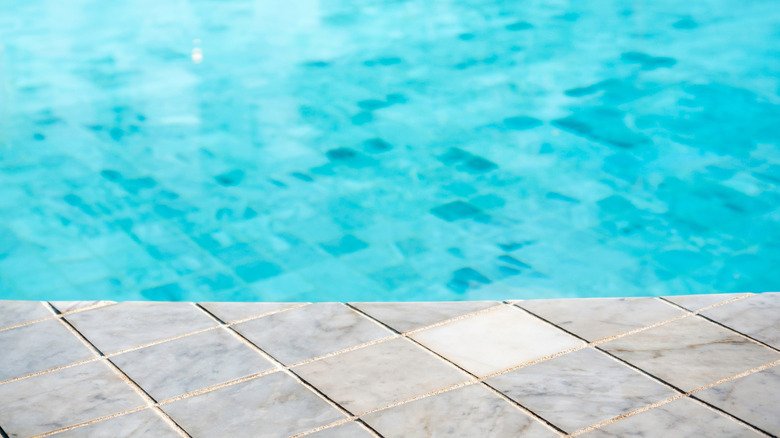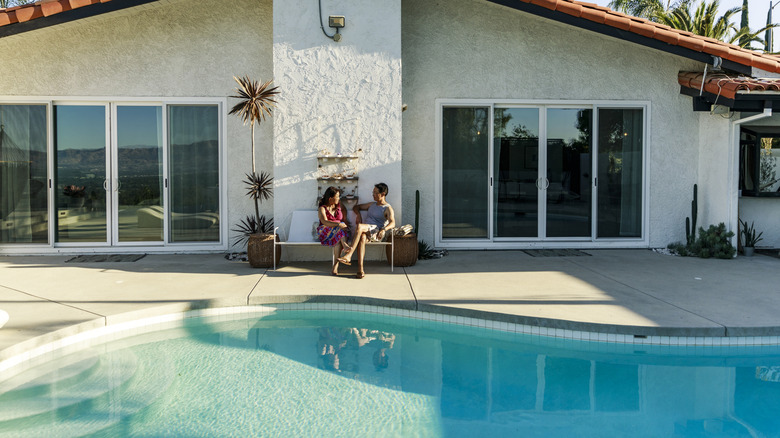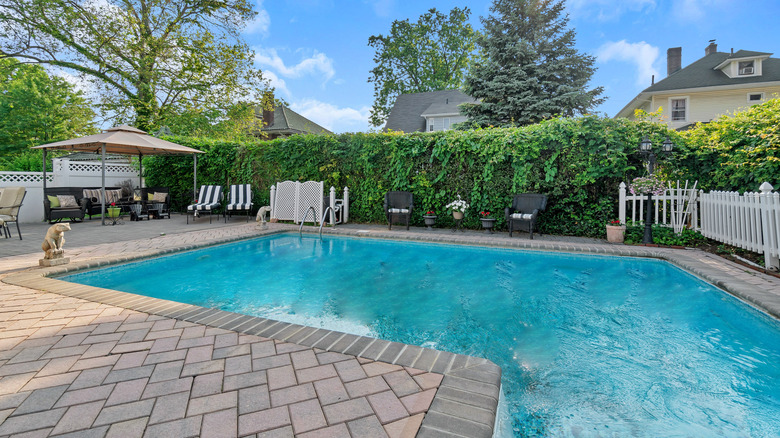The Downside To Using Tile Around Your Pool (& Better Alternatives)
A pool can be the perfect addition to help transform your yard into an oasis. With so many amazing swimming pool designs, though, it can be difficult to keep your dreams rooted in reality. When installing an in-ground pool, you'll want to carefully consider the material you choose to border it. While tile may seem like a great choice because of its durability and design versatility, the reality is that this option may not be the best for your home. Unlike some of the better alternatives, tile can be costly and extremely slippery.
Whether you have guests trying to get from the pool to a reclining chair or kids running around the perimeter, the last thing you want is for someone to slip and fall. Using tile around your pool can be a serious safety hazard. Smooth tile and wet feet are never a good combination — it's one of the reasons certain types of tile should be avoided in your bathroom. There are, of course, some types that are better than others. For instance, a textured tile made for the outdoors can be an viable option for the pool area. However, this may still not be the ideal choice. While it is very durable, outdoor tile is generally a more expensive material than other surface types.
Concrete can be a great option for your pool area
Concrete is a popular choice for pool decking for a lot of reasons. It's extremely durable and low-maintenance, not to mention versatile. It can be colored to match your home or poured in multiple tones to give the patio a varied look. It can even be stamped to give it the look of another surface, like stone or brick. If your backyard already has a well-defined aesthetic, it's still fairly easy to choose the best concrete finish to complement it.
Because concrete is porous, it can help prevent slips by absorbing water. Along with a textured surface, this can help decrease the risk of slips. However, this porousness does come with its downsides. Soil erosion and temperature extremes can cause concrete to crack, so you will want to seal it every few years to help prevent this. You should also clean the surface with a brush, hose, or power washer once a year, especially if the area is dormant during the winter months.
Up the style quotient with pavers around your pool
Pavers are also a popular and stylish choice for pool decking. They come in many different styles, colors, and materials (including natural stone, brick, and concrete). They can be arranged in many different ways, making them a nice choice when trying to create a unique design. They can be a great option for the pool area because most of the materials they're composed of are also porous, and the wide varieties of sizes, shapes, and materials available make it easy to achieve a customized look.
The main difference between pavers and poured concrete is their respective cost. Pavers are often much more expensive than concrete, and they're also more labor-intensive to install, so you can expect the installation to add significantly to the price tag. No matter what material you choose for your pavers, though, safety should always be the top priority — so stay away from smooth, polished materials like travertine and ceramic.


